Are you a Quiet Speculation member?
If not, now is a perfect time to join up! Our powerful tools, breaking-news analysis, and exclusive Discord channel will make sure you stay up to date and ahead of the curve.
Two weeks ago I began a five-part series of articles focused on analyzing the varying impact each color in Magic has upon Modern, based on the individual cards that see play in the format and, to a broader extent, the archetypes made possible by these cards. If you missed last week’s article on blue, check it out here. Today, we’ll be focusing on black---analyzing its color identity in Modern along with the strengths and weaknesses associated with common archetypes that employ the color. Let’s go!
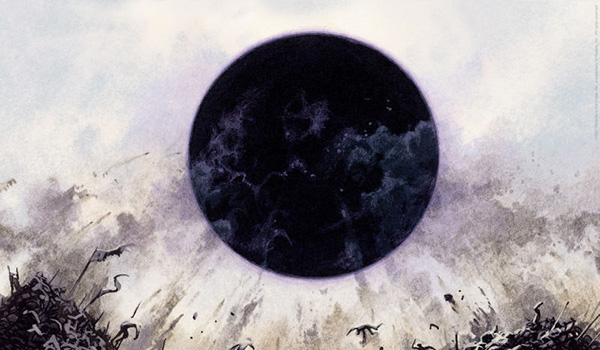
The Cards
Staples
- Thoughtseize
- Inquisition of Kozilek
- Dark Confidant
- Liliana of the Veil
Sideboard Powerhouses
- Leyline of the Void
Strong Options
- Bitterblossom
- Kalitas, Traitor of Ghet
- Damnation
- Viscera Seer
- Death's Shadow
- Tasigur, the Golden Fang
- Painful Truths
- Waste Not
- Goryo's Vengeance
Multi-Color
- Lingering Souls
- Abrupt Decay
- Terminate
- Kolaghan's Command
- Maelstrom Pulse
- Tidehollow Sculler
[wp_ad_camp_1]
The Black Big Three
Black in Modern is summed up by one word: power. With access to both powerful threats and strong interaction, black has no real immediately apparent weakness. Compared to blue and white, which both lack powerful threats, black enjoys various options at multiple spots
 on the curve in the form of Tasigur, the Golden Fang, Dark Confidant, Liliana of the Veil, and Kalitas, Traitor of Ghet. Where other colors are only able to present a few “staple-worthy” threats (green has Tarmogoyf, red has various one- and two-drops) Black’s depth has contributed to its reputation as the strongest color in Modern.
on the curve in the form of Tasigur, the Golden Fang, Dark Confidant, Liliana of the Veil, and Kalitas, Traitor of Ghet. Where other colors are only able to present a few “staple-worthy” threats (green has Tarmogoyf, red has various one- and two-drops) Black’s depth has contributed to its reputation as the strongest color in Modern.
I’ve talked in previous articles about Modern as a format controlled by exchanges, primary among them being mana exchange. For one mana, you get answers, for two mana you get threats, for three mana you get card advantage, and so on. Most colors in Modern enjoy a top-tier staple that fits in one of the three categories, but not all. For example, white has Path to Exile as a one-drop answer, blue has Snapcaster Mage (as a pseudo-three drop). Black, in my opinion, can singlehandedly claim dominance in every category.
Thoughtseize (and to a slightly smaller extent Inquisition of Kozilek) can answer literally every card in the format, placing it miles above Path to Exile and Lightning Bolt in terms of value.
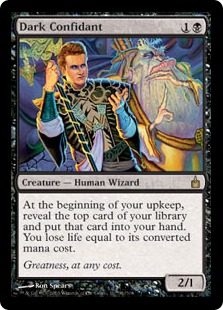 Dark Confidant’s power waxes and wanes with Burn and Affinity’s strength in the format, but currently it is one of the strongest two-drops on the block. Without Dark Confidant, Jund and Junk’s attrition strategy would possibly fall apart, and certainly be diminished. More than almost any creature in the format (except perhaps Tarmogoyf) Dark Confidant demands an immediate answer, or it can singlehandedly win the game by itself. It’s possible (but outside the scope of this article) that Dark Confidant can actually “win” faster than Tarmogoyf swings, as just two free cards can be enough to guarantee victory in some matchups. Regardless, as a single card that can threaten victory for only two mana, Dark Confidant has earned its place as the best creature in black.
Dark Confidant’s power waxes and wanes with Burn and Affinity’s strength in the format, but currently it is one of the strongest two-drops on the block. Without Dark Confidant, Jund and Junk’s attrition strategy would possibly fall apart, and certainly be diminished. More than almost any creature in the format (except perhaps Tarmogoyf) Dark Confidant demands an immediate answer, or it can singlehandedly win the game by itself. It’s possible (but outside the scope of this article) that Dark Confidant can actually “win” faster than Tarmogoyf swings, as just two free cards can be enough to guarantee victory in some matchups. Regardless, as a single card that can threaten victory for only two mana, Dark Confidant has earned its place as the best creature in black.
Liliana of the Veil needs no explanation, but with the recent success of Nahiri, the Harbinger in Modern this is a good excuse to revisit what makes a planeswalker “work” in Modern. As a format that relies so heavily on exchanges and mana efficiency, we often see decks “pricing themselves out” of flexibility in terms of spells that deal with planeswalkers. 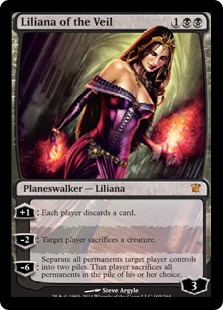 All-around answers like Maelstrom Pulse, Detention Sphere, or Dreadbore are left on the table in favor of hyper-efficient solutions like Terminate and Path to Exile. As a result, a planeswalker that can effectively defend itself from creatures is deceptively hard to remove in Modern.
All-around answers like Maelstrom Pulse, Detention Sphere, or Dreadbore are left on the table in favor of hyper-efficient solutions like Terminate and Path to Exile. As a result, a planeswalker that can effectively defend itself from creatures is deceptively hard to remove in Modern.
Currently, Liliana of the Veil and Nahiri, the Harbinger both see strong play in Modern, due to a few factors. They both provide card advantage and can threaten victory if unanswered, but mainly, they can survive a Lightning Bolt! Damage-based removal is one of the only common ways to kill a planeswalker outside of the combat step, and the ability of these planeswalkers to stay above 3 loyalty makes them incredibly difficult to kill. Often, discard followed by removal on a creature and a Liliana of the Veil is enough to win the game by itself. Not bad for three mana!
Additional Strengths
Besides the Big Three black has to offer, black’s major strengths in Modern come from two areas of focus: discard and removal. If Modern is a format built on powerful threats and exchanges, this means the ability to control said exchanges and interact (reactively or preemptively) to our opponent’s threats is just as powerful as card advantage or other forms of disruption. 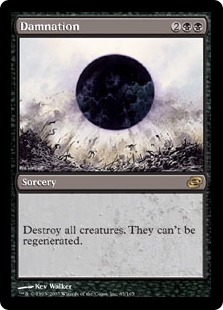 Discard in the form of Thoughtseize and Inquisition of Kozilek is invaluable in a format as wide open and powerful as Modern, and I believe is singlehandedly responsible for holding Modern together and reining in all the broken strategies available in the field.
Discard in the form of Thoughtseize and Inquisition of Kozilek is invaluable in a format as wide open and powerful as Modern, and I believe is singlehandedly responsible for holding Modern together and reining in all the broken strategies available in the field.
Aside from combo decks, Modern consists of various strategies focused on dealing twenty damage (or ten) inside the combat step, which naturally makes removal one of the most important elements of every archetype. While various strategies exist for fighting creatures (chumping with Lingering Souls tokens, sweeping the board with Damnation, casting Tarmogoyf, playing Ensnaring Bridge) the most common method involves removal, of the one-for-one variety. Of these, Path to Exile and Lightning Bolt are undoubtedly king (as we discussed two weeks ago in the white review) but beyond these options black holds the reins as removal champion.
Four removal spells in a list of 75 is rarely enough, forcing many colors to look to other options for their creature-killing needs. 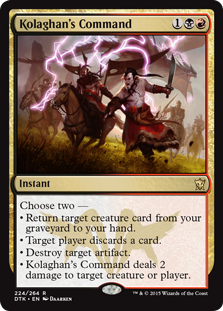 While Dismember exists to allow mono-color archetypes to fight creatures without employing other colors, black benefits greatly from a plethora of creature killing options. Most of the best options are multi-color, but as mono-black currently isn’t a strategy in Modern that’s not too much of an issue. BGx archetypes have access to Abrupt Decay, which kills most creatures in the format (along with most everything else as well). BRx archetypes get Terminate, along with Kolaghan's Command, which incidentally combines with just about everything to be one of the strongest, but most unassuming cards in the format.
While Dismember exists to allow mono-color archetypes to fight creatures without employing other colors, black benefits greatly from a plethora of creature killing options. Most of the best options are multi-color, but as mono-black currently isn’t a strategy in Modern that’s not too much of an issue. BGx archetypes have access to Abrupt Decay, which kills most creatures in the format (along with most everything else as well). BRx archetypes get Terminate, along with Kolaghan's Command, which incidentally combines with just about everything to be one of the strongest, but most unassuming cards in the format.
Before tackling the downsides of black, lets take a look at a few archetypes that demonstrate the power of black in Modern.
Jund Midrange, by Dustin Roberson (1st, SCG IQ)
Jund Midrange takes advantage of the power of black in Modern and pushes its strengths to the max, relying on a combination of discard and powerful removal to grind down the opponent and take advantage in the midgame with powerful threats and strong manlands. Employing almost a full playset of the Big Three (Thoughtseize, Dark Confidant, and Liliana of the Veil), 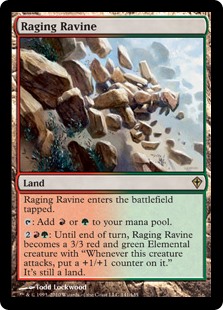 Jund Midrange fills out the archetype with a solid mix of threats and reactive elements, stretching to red and green primarily for Lightning Bolt and Tarmogoyf respectively, but also to enable access to Terminate, Abrupt Decay, and Raging Ravine.
Jund Midrange fills out the archetype with a solid mix of threats and reactive elements, stretching to red and green primarily for Lightning Bolt and Tarmogoyf respectively, but also to enable access to Terminate, Abrupt Decay, and Raging Ravine.
While we could sit and talk all day about what Jund does well and why, for this article I’ll just point to the overall redundancy and fine-tuning present in the archetype we see here. Jund really isn’t doing anything crazy, just a solid mix of efficient threats, answers, and the most powerful cards across three colors together in one archetype. Its main weaknesses are weak draws going late (as discard becomes worthless and its high land count catches up to it) and just being outmatched versus specific archetypes. Black is well suited to beating up on any opponent bringing creatures to the table, but it relies heavily on its discard elements to compete against combo and control archetypes, leaving it vulnerable to fast non-creature combo like Tron or grindy, over-the-top control archetypes like Jeskai.
Abzan Company, by Andrea Pintaldi (1st, SCG IQ)
Here we see black in a support role to green, with the major strengths of black notably absent. Thoughtseize makes an appearance in the sideboard, but really black only exists in this archetype to make use of Viscera Seer to enable combo elements of the archetype. Viewing Abzan Company for what it is, a green creature deck splashing black and white elements, provides us insight to analyze its strengths and weaknesses.
 For one, reduced access to discard suggests a natural weakness to combo and control strategies, and Abzan Company indeed struggles greatly against those archetypes. As it’s based primarily on individually weak creatures with few ways to gain card advantage outside of Collected Company, we can infer that sweepers like Damnation and Anger of the Gods are strong against the archetype.
For one, reduced access to discard suggests a natural weakness to combo and control strategies, and Abzan Company indeed struggles greatly against those archetypes. As it’s based primarily on individually weak creatures with few ways to gain card advantage outside of Collected Company, we can infer that sweepers like Damnation and Anger of the Gods are strong against the archetype.
This might come as common sense to someone used to playing with or against the archetype, but we can take this same style of analysis and apply it to any “rogue” archetype based simply on the lands our opponent has placed on the table and the few spells we’ve seen him/her play. While at high-level events an Overgrown Tomb strongly suggests to us that our opponent is on Jund or Abzan Company, it’s worth keeping in the back of our head that we don’t really know for sure, and being prepared to analyze our opponent’s deck based on limited information can help us with scrying decisions and the like and can definitely influence the course of a game.
The Downsides
All this talk of the greatness of black puts us in danger of painting black as an all-powerful color with no weaknesses, which is definitely not true. Black does a few things well, such as preemptively attacking an opponent’s hand and removing problem cards through discard, and killing creatures of course. Unfortunately, it suffers strongly from problematic permanents, with no good ways to handle artifacts or enchantments without stretching into other colors. 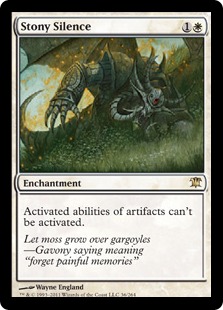 In addition, discard spells are some of the most powerful cards to see in an opening hand, but can be terrible topdecks in the midgame and akin to a dead draw in a format that heavily punishes dead draws. These weaknesses are minor and easily solved by incorporating other colors, though, and nowhere near as damning as the lack of powerful threats out of blue, for example.
In addition, discard spells are some of the most powerful cards to see in an opening hand, but can be terrible topdecks in the midgame and akin to a dead draw in a format that heavily punishes dead draws. These weaknesses are minor and easily solved by incorporating other colors, though, and nowhere near as damning as the lack of powerful threats out of blue, for example.
In addition, black doesn’t really have much to offer as far as sideboard options are concerned. Where white has powerful hoser-type cards that invalidate whole strategies like Stony Silence does for Affinity, black really just has Leyline of the Void to combat graveyard strategies, and that card only sees fringe play. Sweepers like Damnation have to count at least a little bit, but Damnation and cards like it are just more of the same rather than an actual high-impact spell that draws us to the color. Virulent Plague deserves at least an honorable mention as a solid answer to tokens, but token strategies aren’t prevalent enough in the format to deserve specific attention.
Conclusion
Black benefits from access to powerful threats, answers, and a wide variety of options to interact with the opponent’s hand and board. Dark Confidant and Liliana of the Veil are format staples, and Thoughtseize is strongly in the argument for best one-drop in Modern, depending on who you ask. Black struggles with interacting with problematic permanents once they hit the table, but discard can often solve those issues before they develop.
We often see black paired with other colors in Modern to shore up specific weaknesses, be it blue for card advantage or red/green for more removal/threats respectively. Black needs no new cards to continue being a strong force in Modern, and will probably remain so for the length of the format.
Thanks for reading, and I’ll see you next week!
Trevor Holmes
The_Architect on MTGO
Twitch.tv/Architect_Gaming
Twitter.com/7he_4rchitect





Good article, thanks! I’ve played black in Modern for as long as I’ve played Modern, and I think you overlooked a couple of things Black should be recognized for.
Removal is a big one: Go for the Throat, Doom Blade, Victim of Night, Dismember (which you did mention) and Slaughter Pact all see varying amounts of play. Interestingly they are all very strong multipurpose creature removal with a significant tradeoff or drawback.
Also, and complementary to hand disruption, is library card removal through graveyard targets using Surgical Extraction or Extirpate, or–slower but not graveyard-dependent–Memoricide. Decks playing black can use cards like this to completely change a game’s topography, by extracting Violent Outburst, say, or Urza’s Tower.
As someone who has played below-the-radar BW decks in Modern for quite a while I can say that both of these black card pools are very relevant options, and are probably worth touching on in an article like this.
Great idea for an article series. I’m hoping you put colorless/generic cards in a sixth article, too.
Your opening lists seem to always have strange bedfellows. Tasigur in the same strata as waste not? tas and angler are closer to Bob and Lili than some tier 4 card that doesn’t even Crack a dedicated discard deck half the time. Bitterblossom similarly looks strong but has done very little.
Honestly these colour articles are kind of useless because they don’t connect to what decks are actually viable. If you”re in the midrange goodstuff market I guess you might care that blue gives you snapcaster and visions whereas white gives you path and souls but in the big picture “white” and “blue” don’t mean much. There’s only one deck that wants might of old krosa. One deck wants galvanic blast. The mana fixing in modern is so good the colour doesn’t even really matter that much for those kind of decks (you can play jeskai w black for souls and command if you like).
Like is ravens crime good? Gravecrawler? Blood artist? Vault skirge? Grave titan? Surgical extraction? It all depends on the deck not the colour.